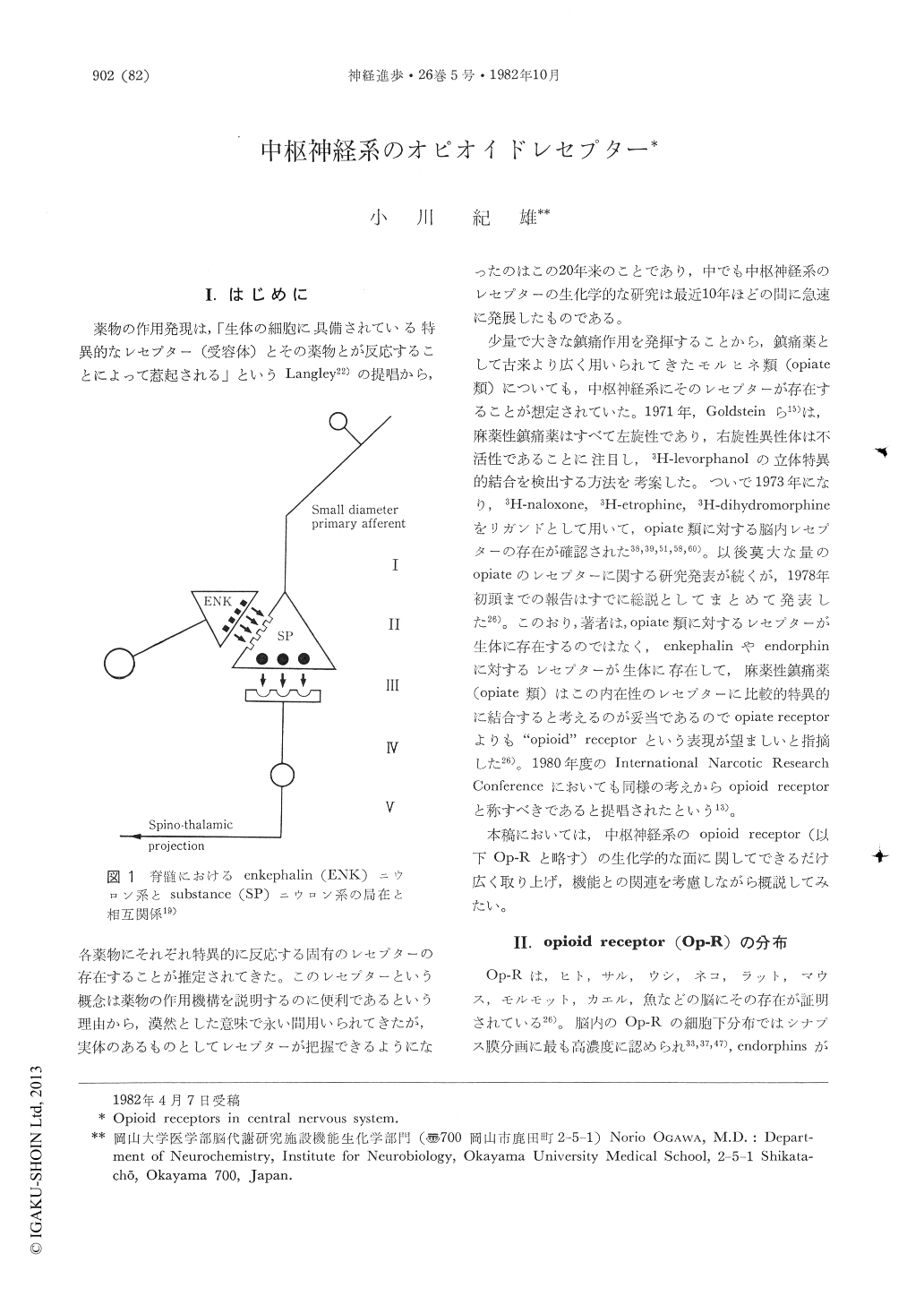Japanese
English
- 有料閲覧
- Abstract 文献概要
- 1ページ目 Look Inside
I.はじめに
薬物の作用発現は,「生体の細胞に具備されている特異的なレセプター(受容体)とその薬物とが反応することによって惹起される」というLangley22)の提唱から,各薬物にそれぞれ特異的に反応する固有のレセプターの存在することが推定されてきた。このレセプターという概念は薬物の作用機構を説明するのに便利であるという理由から,漠然とした意味で永い間用いられてきたが,実体のあるものとしてレセプターが把握できるようになったのはこの20年来のことであり,中でも中枢神経系のレセプターの生化学的な研究は最近10年ほどの間に急速に発展したものである。
少量で大きな鎮痛作用を発揮することから,鎮痛薬として古来より広く用いられてきたモルヒネ類(opiate類)についても,中枢神経系にそのレセプターが存在することが想定されていた。1971年,Goldsteinら15)は,麻薬性鎮痛薬はすべて左旋性であり,右旋性異性体は不活性であることに注目し,3H-levorphanolの立体特異的結合を検出する方法を考案した。ついで1973年になり,3H-naloxone,3H-etrophine,3H-dihydromorphineをリガンドとして用いて,opiate類に対する脳内レセプターの存在が確認された38,39,51,58,60)。
It is widely assumed that the first interaction between the drug and its target tissue occurs at the receptor, so detection of specific binding sites for CNS-acting drugs in brain may help identify potential target brain regions for those drugs, and also may elucidate the mechanism of action of CNS-acting drugs.
The existence of receptors specific for opiates in brain was suspected many years before their actual identification because of the well-known pharmacological properties of the opiate alkaloids.

Copyright © 1982, Igaku-Shoin Ltd. All rights reserved.


